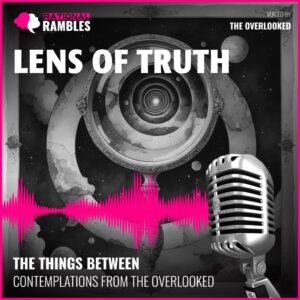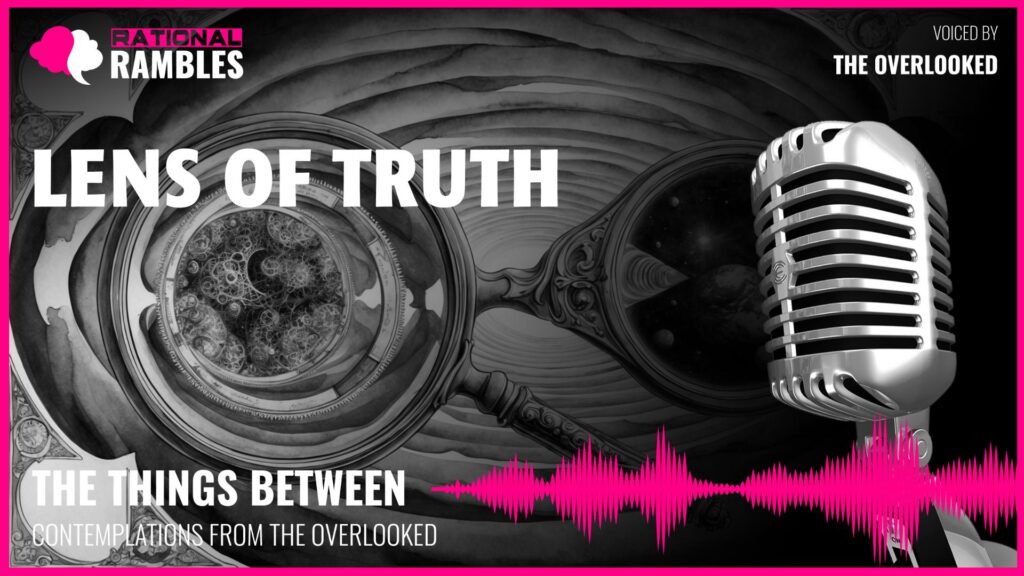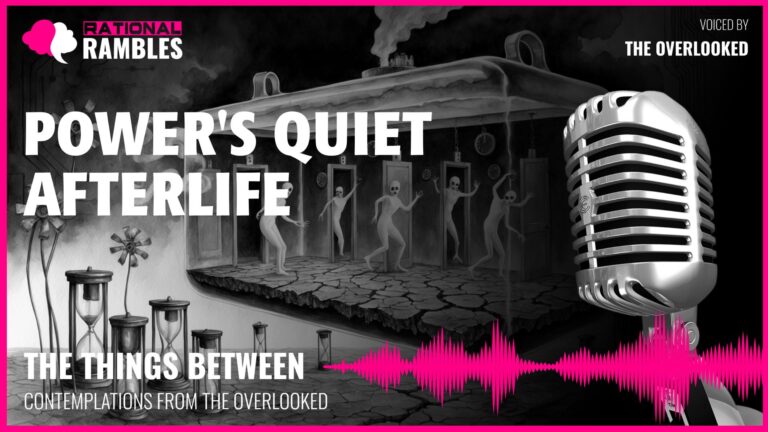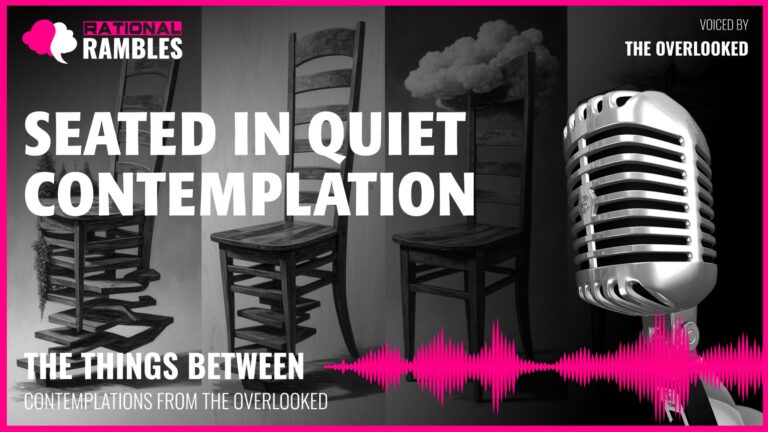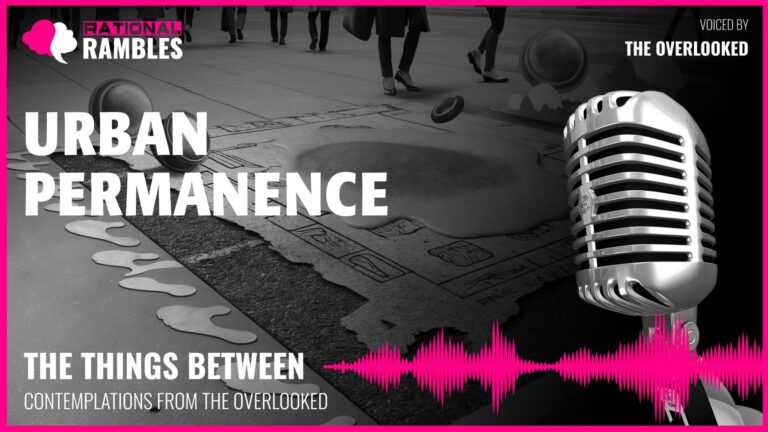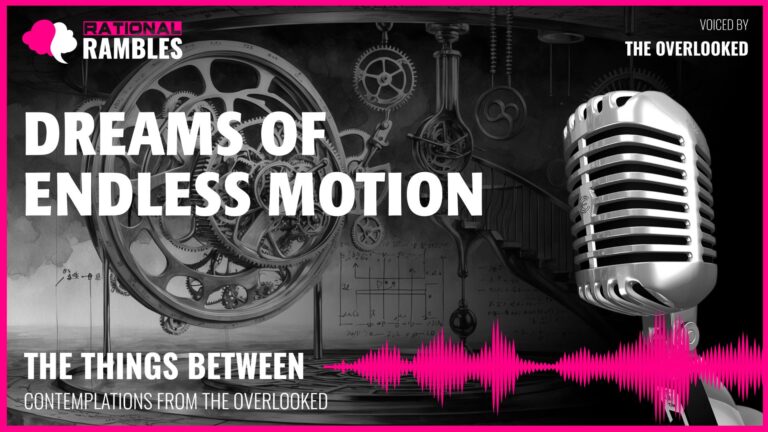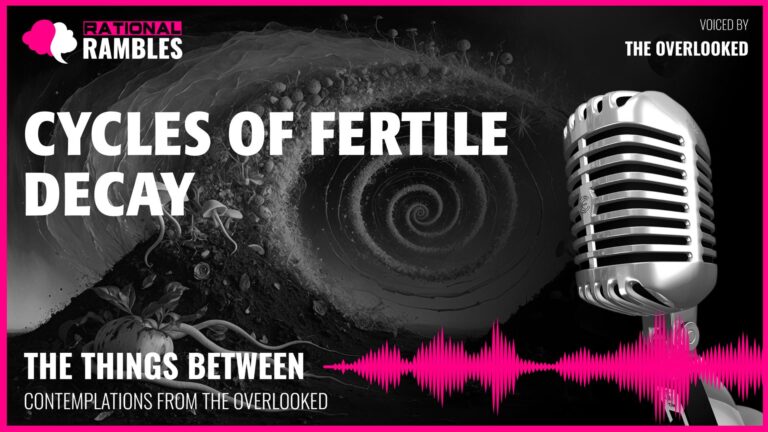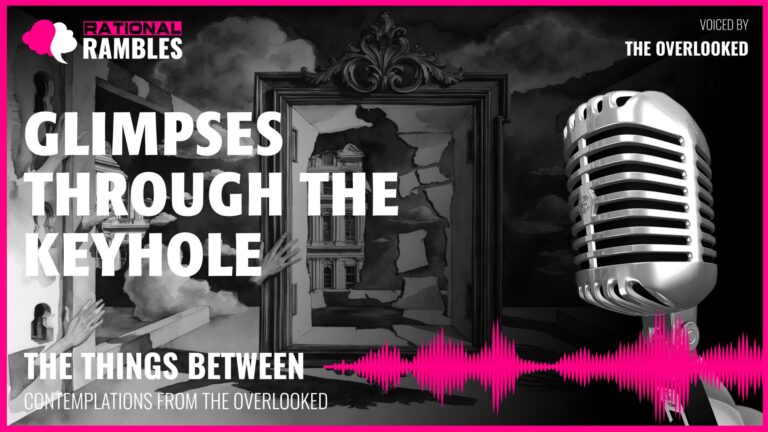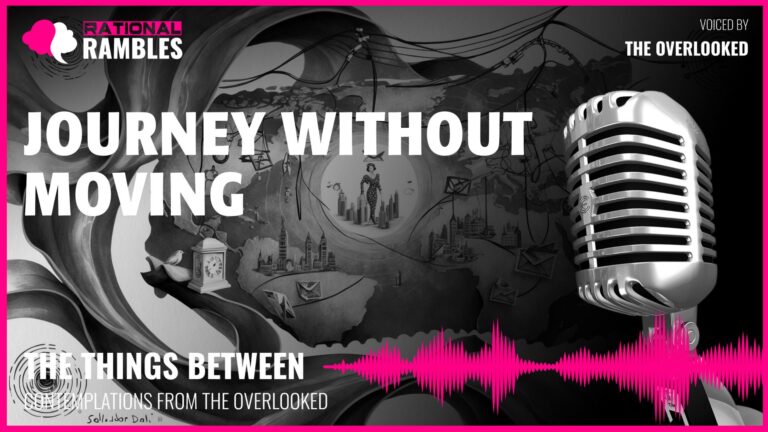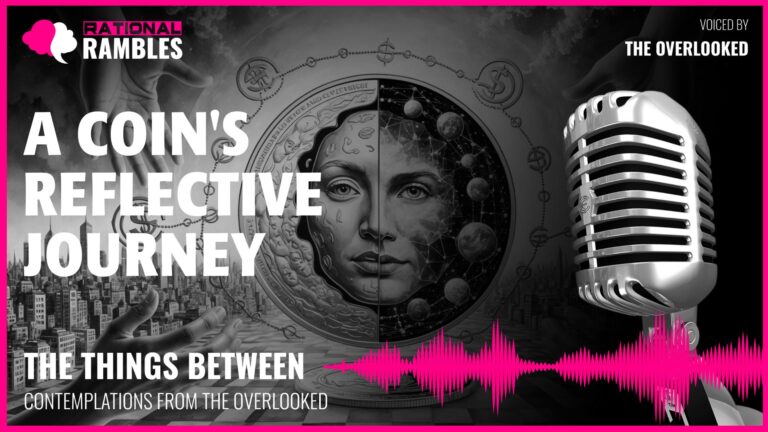The Lens of Revelation: Understanding Focus, Perspective, and the Nature of Truth
Introduction
In our quest to understand reality, we often overlook a fundamental question: what does it mean to truly see? We navigate daily life convinced of our perceptions, yet how much of what surrounds us remains invisible to our limited senses? The act of focused attention—of truly seeing beyond surface appearances—sits at the intersection of epistemology, phenomenology, and ontology. This intersection reveals profound questions about the nature of reality itself: Does magnification create distortion or clarity? Is what we perceive more or less real than what exists beyond our perception? How does the act of observation transform both the observer and the observed?
These questions stretch beyond abstract philosophical inquiry. They touch the essence of how we encounter our world, construct meaning, and determine what constitutes truth. From the microscopic revelations that revolutionized science to the metaphorical “lenses” through which we interpret our social world, the concept of magnification serves as both literal tool and powerful metaphor for how humans make sense of existence.
This article explores the philosophy of magnification and focused attention—not merely as optical phenomena but as frameworks for understanding the relationship between perception and reality. We will examine how the simple act of bringing something into focus represents a fundamental philosophical choice with implications for ethics, epistemology, and our understanding of consciousness itself. Through this exploration, we may discover that the humble act of close observation contains surprising depth, revealing not just the object of our attention but also the nature of observation itself.
The Ontology of Magnification: Creation vs. Revelation
Is magnification an act of creation or revelation? This question strikes at the heart of ontological debates that have occupied philosophers for centuries. When we magnify an object, we don’t materially change its structure—the intricate patterns on a leaf or the complex weave of fabric exist independently of our observation. Yet something transformative undeniably occurs when these details enter our perception.
Plato’s Cave and the Revelation of Reality
The distinction between creation and revelation echoes Plato’s allegory of the cave, where prisoners mistake shadows for reality until one escapes to discover the true world. Magnification functions similarly—not by generating new realities but by removing the limitations that prevent us from accessing what already exists. In Platonic terms, magnification helps us move from the shadowy world of appearances closer to the forms themselves.
Berkeley’s idealism presents a contrasting view, suggesting that existence itself is dependent on perception—esse est percipi (“to be is to be perceived”). Under this framework, the magnified details might not meaningfully “exist” until they enter consciousness through observation. The magnification process thus doesn’t merely reveal but participates in bringing certain aspects of reality into being through the act of perception.
The Paradox of Revealing Through Distortion
Magnification presents a fascinating paradox: it achieves greater truth through a kind of distortion. Objects appear larger than they actually are, yet this “untruth” leads to more accurate understanding. This paradox relates to Heidegger’s concept of aletheia—truth as unconcealment rather than correspondence. Through magnification, aspects of reality are “unconcealed” that would otherwise remain hidden, suggesting that truth might better be understood as a process of revelation rather than a static correspondence between perception and reality.
This reveals a more nuanced understanding of truth itself. If magnification creates a kind of controlled distortion that leads to greater understanding, we might question whether any form of human knowledge can exist without some form of “distortion”—some framework or perspective that simultaneously reveals and transforms what it observes. Nietzsche’s perspectivism becomes relevant here: “There are no facts, only interpretations.” Perhaps all knowledge involves magnification of certain aspects of reality at the expense of others.
The Material and the Perceived: Dual Realities
This ontological tension—between the object as it exists independently and as it appears when magnified—recalls Kant’s distinction between noumena (things-in-themselves) and phenomena (things as they appear to us). Magnification doesn’t access the noumenal world directly, but it does expand our phenomenal experience, revealing that what we consider “normal” perception is merely one arbitrary point on a continuum of possible perspectives.
The philosophy of science echoes this tension. When a scientist observes cell structures through a microscope, are they discovering what was always there or constructing a new level of reality through their observational practices? The debate between scientific realism and constructivism hinges on similar questions about whether scientific instruments reveal pre-existing truths or participate in creating the realities they purport to merely observe.
The Epistemology of Focus: Selective Attention and Knowledge
Focus necessarily involves selection—to bring something into sharp relief requires relegating everything else to the periphery. This selective nature of attention raises profound epistemological questions about how we know what we know, and what we sacrifice through the very act of concentration.
The Power and Limitations of Selectivity
William James described attention as “the taking possession by the mind, in clear and vivid form, of one out of what seem several simultaneously possible objects or trains of thought.” This selectivity has tremendous epistemological power—by isolating variables, we can understand complex systems that would overwhelm holistic perception. Yet this same selectivity creates blind spots. We gain depth at the expense of breadth.
This trade-off manifests across all domains of knowledge. The academic specialist understands their narrow field with unprecedented clarity but may miss interdisciplinary connections visible to the generalist. The microscope reveals cellular structures invisible to the naked eye but loses the organism’s place in its ecosystem. Each gains in precision comes with a corresponding loss of context.
Focal Points and Framing Effects
The very act of focusing doesn’t merely select what we see but influences how we interpret it. In cognitive science, this appears as “framing effects,” where the same information presented in different contexts leads to different conclusions. When we focus attention on something, we implicitly frame it as significant, potentially distorting its actual importance in a broader context.
Philosophers of science like Thomas Kuhn have demonstrated how scientific paradigms function as attention-directing mechanisms, highlighting certain phenomena while rendering others invisible or insignificant. What scientists observe is inseparable from the theoretical “lenses” through which they observe. The same principle applies beyond science—our conceptual frameworks, cultural backgrounds, and personal histories all function as lenses that both reveal and conceal aspects of reality.
The Ethics of Attention
If focus determines what we know, then attention becomes an ethical choice. Simone Weil recognized this when she wrote that “attention is the rarest and purest form of generosity.” Where we direct our magnifying gaze represents a value judgment about what deserves close examination.
Consider how societal attention magnifies certain issues while minimizing others. Media coverage functions as a collective magnifying glass, determining which events become defining moments and which remain footnotes. When we examine social injustices, environmental concerns, or technological risks, decisions about where to focus collective attention have profound ethical implications. The choice of what to magnify is never neutral.
The Dialectic of Detail and Context
The epistemology of focus suggests that knowledge advances through a dialectic between detail and context—between magnified examination and zoomed-out comprehension. William Blake captured this interplay in his famous lines: “To see a World in a Grain of Sand, And a Heaven in a Wild Flower.” The most profound understanding comes not from perpetual magnification nor from distant overview, but from the dynamic movement between these perspectives.
This dialectic appears in methodological approaches across disciplines. Hermeneutics describes the “hermeneutic circle,” where understanding moves between parts and whole—the meaning of a text emerges through circulation between close reading of specific passages and comprehension of the entire work. Similarly, systems thinking emphasizes that complex systems can only be understood through movement between micro and macro perspectives.
The Phenomenology of Magnification: Transforming Experience
Beyond ontological and epistemological questions, magnification transforms the lived experience of the observer. Phenomenology—the philosophical study of conscious experience from the first-person perspective—offers rich insights into how the act of close observation alters our relationship with the world and ourselves.
The Experience of Discovery
The moment of magnified observation often produces a distinctive phenomenological state—a sudden sense of discovery and wonder. When ordinary objects reveal unexpected complexity under close inspection, we experience what phenomenologists call a “breakdown in ready-to-hand engagement.” As Heidegger might describe it, the object stops being a mere tool or background feature and becomes present-at-hand, an object of contemplation and revelation.
This shift in perspective creates what Edmund Husserl termed an “epoché”—a suspension of the natural attitude that takes the world for granted. Magnification makes the familiar strange, allowing us to bracket our assumptions and see anew. Children naturally experience this phenomenological state when examining insects or plants through magnifying glasses—a pure form of wonder that adults often lose but can recapture through deliberate attention.
Embodied Perception and the Proximal-Distal Relationship
Magnification alters our embodied relationship with the observed. Maurice Merleau-Ponty described perception as an embodied activity, not merely a mental representation. When we use tools of magnification, we extend our perceptual capacities beyond their natural limits while simultaneously becoming aware of those limits. This paradoxical experience—transcending bodily constraints while becoming more conscious of them—creates a unique phenomenological state.
Consider how magnification manipulates the proximal-distal relationship—bringing what is far (epistemically or physically) into proximity. This manipulation creates what phenomenologists call an “intentional modification” in our relationship with objects. The observer must find the optimal distance—neither too close nor too far—a physical manifestation of the epistemological balance between immersion and detachment required for understanding.
Time and Patience in Observation
Magnified observation alters not just our experience of space but also time. It requires patience—a slowing down that counteracts the accelerated pace of modern life. Henri Bergson distinguished between “clock time” (chronos) and “lived time” (kairos), with the latter being experienced subjectively. Careful observation expands lived time, creating what Mihaly Csikszentmihalyi later termed “flow states”—periods of deep absorption where time perception alters.
This temporal dimension of magnification connects to broader philosophical questions about attention in an age of distraction. As technologies increasingly fragment our attention, the act of sustained focus becomes both more difficult and more valuable. The phenomenology of close observation offers a counterpoint to scattered attention, suggesting that certain forms of understanding require not just visual acuity but temporal commitment.
Intimacy and Distance in Observation
Magnification creates a particular form of intimacy with the observed—bringing the observer closer while maintaining a necessary distance. This recalls Martin Buber’s distinction between I-It relationships (where the other is objectified) and I-Thou relationships (characterized by mutual recognition). Magnified observation sits at an interesting boundary between these modes—it examines the object closely but can either objectify it further or lead to deeper appreciation of its intrinsic qualities.
The phenomenology of scientific observation demonstrates this tension. A botanist studying plant cells might oscillate between seeing them as mere objects of study and experiencing wonder at their intricate design. This phenomenological shift illustrates how magnification can either increase objectification or foster what Husserl termed “empathic understanding”—a form of knowledge that respects the integrity of what is observed.
The Metaphysics of Perspective: Reality Through Different Lenses
Magnification serves as a powerful metaphor for how perspective shapes our understanding of reality. Its physical principles illuminate deeper metaphysical questions about reality and how it appears differently depending on the position of the observer.
The Perspectival Nature of Knowledge
Friedrich Nietzsche revolutionized philosophy by arguing for perspectivism—the view that knowledge is always situated and partial, determined by the position of the knower. “There is only a perspective seeing, only a perspective ‘knowing,'” he wrote. Magnification provides a literal demonstration of this philosophical claim, showing how the same object appears dramatically different depending on the lens through which it’s viewed.
This perspectival understanding challenges absolutist conceptions of truth. If different magnifications reveal different aspects of reality, what grounds do we have for privileging one level of observation over another? The microscopic view is no less “real” than the macroscopic, just as the quantum level is no less real than the everyday objects we perceive. Each perspective reveals a different layer of a complex, multi-dimensional reality.
Scale and Ontological Categories
Magnification troubles our ontological categories by revealing how they depend on scale. Consider how our understanding of water changes across scales of observation—from everyday liquid to molecular H₂O to quantum probability waves. Each shift in scale reveals properties that seem incompatible with other levels, raising metaphysical questions about which level constitutes the “real” nature of water.
This problem of scale connects to ancient metaphysical debates about parts and wholes, unity and multiplicity. Aristotle wrestled with questions about how substances relate to their constituents, while Buddhist metaphysics explored how composite entities lack intrinsic existence (sunyata or emptiness). Magnification makes these abstract metaphysical puzzles concrete by revealing how seemingly solid objects dissolve into dynamic patterns under closer inspection.
The Observer Effect in Quantum and Social Realms
Quantum physics famously introduced the observer effect—the principle that the act of measurement inevitably affects what is being measured. This principle extends beyond subatomic particles to all forms of observation. When we closely observe social phenomena, for instance, people often alter their behavior in response to being studied (the Hawthorne effect).
Magnification acts as a form of measurement and thus participates in the observer effect. The process of bringing something into focus inevitably changes its context, lighting, or other conditions. This suggests a profound metaphysical insight: the ideal of perfectly neutral observation is impossible. The observer and observed form an inseparable system, each influencing the other in ways that challenge traditional subject-object metaphysics.
Transformation Through Observation
Beyond merely revealing what exists, focused attention can transform the observed. When sunlight passes through a magnifying glass, it concentrates into heat capable of starting fires—an apt metaphor for how attention can transform its object. This transformative potential appears across contexts, from the mindfulness practitioner whose attention transforms their experience of pain to the scientist whose observation leads to new theoretical frameworks.
This transformative aspect of focused attention connects to process philosophy, which emphasizes becoming over static being. Alfred North Whitehead described reality as composed of “actual occasions” that emerge through prehension (a form of perception) of other entities. In this view, perception doesn’t merely record reality but participates in its ongoing creation—a metaphysical position that gives profound significance to how and where we direct our attention.
The Pragmatics of Perception: Application and Utility
Beyond abstract philosophical considerations, the principles of focused attention and magnification find practical application across numerous domains. The pragmatist tradition in philosophy, developed by figures like William James and John Dewey, evaluates ideas based on their practical consequences rather than abstract correspondence with reality. From this perspective, the value of focused attention lies in what it enables us to accomplish.
Scientific Discovery and Innovation
The history of science demonstrates how tools of magnification have repeatedly transformed our understanding of the world. From van Leeuwenhoek’s pioneering microscopy revealing the existence of microorganisms to modern electron microscopes visualizing individual atoms, each advance in magnification technology has opened new domains of knowledge with profound practical implications.
Scientific instruments extend our perceptual capabilities, allowing us to observe phenomena otherwise inaccessible to human senses. This extension of perception has led to countless innovations—from disease treatments based on microscopic understanding to nanotechnology manipulating matter at previously invisible scales. The pragmatic value of these developments demonstrates how abstract philosophical questions about perception connect directly to human wellbeing.
Cognitive Tools and Attention Practices
Beyond physical tools, humans have developed sophisticated cognitive techniques for directing and focusing attention. Meditation practices across various traditions train practitioners to sustain focused awareness, while analytical methods teach ways of isolating variables and examining relationships systematically. These attention practices serve as cognitive magnifying glasses, revealing aspects of experience typically overlooked.
The pragmatic value of such practices appears in diverse domains. Mindfulness techniques improve mental health by allowing practitioners to observe thoughts without immediate reaction. Critical thinking methods help identify logical fallacies that might otherwise escape notice. Close reading practices in literary analysis reveal layers of meaning invisible to casual reading. Each demonstrates how directed attention functions as a practical tool for enhancing understanding.
Ethics of Technological Augmentation
As technologies increasingly augment human perception, new ethical questions emerge about how these tools should be designed and deployed. From medical imaging technologies that reveal internal bodily states to surveillance systems that magnify certain behaviors for inspection, these technologies are never neutral. They embody choices about what deserves attention and how it should be observed.
The pragmatic question becomes not just whether these technologies work, but whether they work toward ends we collectively value. When facial recognition systems focus on certain features while overlooking others, or when algorithmic systems magnify certain data points while minimizing others, these decisions have real consequences for justice, privacy, and autonomy. The philosophy of magnification thus connects directly to pressing questions about technological ethics.
Democratic Attention and Social Focus
At a societal level, collective attention functions as a form of magnification, determining which issues receive resources and consideration. The pragmatist John Dewey emphasized that democracy requires not just voting mechanisms but public deliberation that focuses collective attention on shared problems. This view suggests that how we collectively direct our social “magnifying glass” has profound implications for democratic functioning.
Contemporary information environments present new challenges for democratic attention. With countless issues competing for limited public focus, mechanisms for directing collective attention (like media, education, and deliberative forums) take on crucial importance. The pragmatic question becomes how to design systems that help communities focus on what matters most, balancing immediate concerns with longer-term considerations that might otherwise escape notice.
Authenticity and Mediation: The Paradox of Technological Seeing
As we increasingly rely on technologies to extend our perceptual capacities, complex questions emerge about authenticity and mediation. The paradox of technological seeing lies in how tools simultaneously connect us more directly to reality while introducing new layers of separation between observer and observed.
Technological Mediation of Experience
Philosophers of technology like Don Ihde and Peter-Paul Verbeek have analyzed how technologies mediate our relationship with the world. Ihde distinguishes between different types of human-technology-world relations, including “embodiment relations” (where technologies extend bodily capacities) and “hermeneutic relations” (where technologies provide representations that require interpretation).
Magnification technologies occupy an interesting space between these relations. On one hand, they extend our visual capacity, functioning as bodily extensions. On the other, they transform what we see in ways that require interpretation, potentially introducing distortions or artifacts not present in the object itself. This dual nature creates a complex relationship between technological seeing and claims of authenticity.
The Authenticity Paradox
A fascinating paradox emerges: instruments of magnification simultaneously create distance from direct experience while providing more intimate access to reality. This recalls Heidegger’s concerns about technology potentially “enframing” reality rather than revealing it. Yet technologies of magnification often function contrary to this concern, breaking through surface appearances to reveal deeper structures otherwise inaccessible.
This paradox raises questions about what constitutes “authentic” perception. If magnified vision reveals aspects of reality invisible to the naked eye, is technologically-aided perception actually more authentic than unassisted seeing? Or does technological mediation inevitably distance us from direct encounter with the world? Different philosophical traditions offer contrasting answers to these questions.
Trust and Expertise in Technological Seeing
As perception becomes increasingly technologically mediated, questions of trust and expertise take on greater importance. Most people lack the specialized knowledge to independently verify what advanced instruments reveal. This creates new forms of epistemic dependence, where non-experts must trust the testimony of those who understand the technologies of perception.
This dependence connects to broader epistemological questions about testimony and trust explored by philosophers like Miranda Fricker. How do we determine which technologically-mediated perceptions to trust? What happens when different instruments or interpretations conflict? These questions become particularly urgent as visualization technologies play increasingly important roles in fields from medicine to climate science to criminal justice.
Democratization of Observational Tools
While specialized knowledge remains necessary for many advanced instruments, many tools of magnification have become increasingly accessible. Digital microscopes connect to smartphones, thermal imaging is available in consumer devices, and satellite imagery is accessible through public interfaces. This democratization potentially transforms who can participate in specialized observation.
This shift connects to philosophical questions about epistemic justice—how knowledge is distributed across society and who has the right to make knowledge claims. When tools of magnification become widely available, opportunities emerge for citizen science, community monitoring, and challenges to institutional expertise. The philosophical implications include both risks (potential misinterpretation) and benefits (more diverse perspectives contributing to knowledge production).
Focus in an Age of Distraction: Contemporary Relevance
The philosophy of focus and magnification takes on particular urgency in our current information environment. As technologies increasingly fragment attention while simultaneously extending our perceptual capacities, understanding the nature and value of focused attention becomes crucial for navigating contemporary challenges.
The Attention Economy and Its Costs
Contemporary digital environments function according to what theorists call an “attention economy,” where human attention becomes the scarce resource companies compete to capture. This environment systematically works against sustained focus, instead optimizing for continuous partial attention across multiple streams of information.
Philosophers and cognitive scientists have raised concerns about what this means for human flourishing. Matthew Crawford argues that attention constitutes “a resource essential to personhood,” such that “to be free is to control to whom you give your attention, and upon what terms.” Similarly, Nicholas Carr suggests that technologies designed to capture and disperse attention may fundamentally alter how we think, potentially diminishing capacities for deep reading and sustained contemplation.
Deep Attention as Resistance
In this context, practices of deep attention take on political dimensions. Thinkers like Jenny Odell frame sustained attention as a form of resistance against extractive economic systems, arguing that “the ultimate form of protest is to just be able to focus on a single thing for a long time.” This perspective recasts the philosophical value of focus in terms of human autonomy and resistance to commodification.
This resistance connects to older philosophical traditions. Simone Weil considered attention a form of prayer, writing that “attention, taken to its highest degree, is the same thing as prayer.” Similarly, contemplative traditions across cultures have developed sophisticated practices for training attention, recognizing its connection to ethical and spiritual development. These traditions offer resources for contemporary responses to attention fragmentation.
Epistemic Responsibility in Information Abundance
The overwhelming abundance of information in digital environments creates new epistemic responsibilities regarding where we direct our attention. With more potential knowledge available than any individual could possibly process, choices about what deserves close inspection become increasingly significant.
Epistemologists like Lorraine Code emphasize the concept of “epistemic responsibility”—our obligation to be thoughtful about what we believe and how we form those beliefs. In an environment designed to capture rather than cultivate attention, exercising this responsibility requires both individual practices and collective systems that support careful discernment rather than reflexive reaction. The magnifying glass becomes a powerful metaphor for the selective attention increasingly necessary in information-rich environments.
Augmented Cognition and Extended Minds
As digital technologies increasingly function as cognitive extensions, philosophers of mind have developed theories of “extended cognition” that reconceptualize the boundaries of the thinking self. Andy Clark and David Chalmers argue that external tools can function as parts of our cognitive processes, fundamentally changing how we think rather than merely assisting pre-existing thought patterns.
This perspective raises fascinating questions about how digital tools might function as “cognitive magnifying glasses”—potentially enhancing certain aspects of thought while diminishing others. If our cognitive processes increasingly incorporate digital extensions, how does this transform what and how we perceive? The philosophy of magnification provides conceptual tools for understanding these transformations, helping distinguish between extensions that enhance our cognitive capacities and those that potentially diminish them.
Synthesis: The Dialectic of Vision
Throughout this exploration, we’ve encountered numerous tensions and apparent contradictions: between revealing and distorting, between selecting and excluding, between intimacy and distance. Rather than resolving these tensions, a richer philosophical approach might recognize them as productive dialectics—opposing forces whose interplay generates deeper understanding.
The Unity of Opposing Perspectives
The dialectical tradition in philosophy, from Heraclitus through Hegel and beyond, recognizes how apparently contradictory perspectives can each contain partial truths. Applied to magnification, this suggests that different levels of observation aren’t competing accounts of reality but complementary perspectives that, taken together, provide richer understanding than any single view.
This dialectical approach helps resolve the apparent contradiction between magnification as revelation and distortion. Both characterizations contain truth—magnification simultaneously reveals previously unseen aspects of reality while introducing distortions through selection and emphasis. The philosophical insight comes not from choosing between these perspectives but from understanding their necessary interconnection.
The Ethical Practice of Attention
A dialectical approach also illuminates the ethical dimensions of attention. If focus inevitably involves selection (bringing some aspects of reality into clarity while relegating others to periphery), then attention represents an ethical choice about what deserves consideration. The ethical question becomes not whether to select—which is unavoidable—but how to cultivate attention practices that acknowledge their selectivity while remaining open to what might lie beyond their current focus.
This ethical stance resonates with philosophical traditions emphasizing both commitment and humility. It requires commitment to focused examination of what seems important while maintaining humility about the partiality of any perspective. Such an approach avoids both the relativism that treats all perspectives as equally valid and the dogmatism that insists on a single correct view.
Integrating Multiple Scales of Observation
Perhaps the most profound philosophical insight from our exploration concerns the relationship between different scales of observation. Rather than privileging either the microscopic or macroscopic view, wisdom might lie in the ability to move fluidly between scales, recognizing how phenomena at different levels interact and inform each other.
This multi-scale perspective connects to emerging scientific understandings of complex systems, where phenomena emerge from interactions across different levels of organization. It also resonates with indigenous knowledge traditions that have long emphasized relationships between micro and macro scales. The capacity to integrate perspectives across scales—to see both the forest and the trees, both the system and its components—represents a sophisticated cognitive achievement with both intellectual and ethical dimensions.
Beyond Subject-Object Dualism
Finally, the philosophy of magnification challenges traditional subject-object dualism by revealing how the observer and observed form an interconnected system. The act of focused attention doesn’t simply record pre-existing reality but participates in revealing particular aspects of that reality in particular ways. This insight connects to phenomenological, pragmatist, and non-Western philosophical traditions that emphasize the participatory nature of knowledge.
This participatory understanding doesn’t collapse into pure subjectivism or relativism. Instead, it recognizes how knowledge emerges through particular forms of engagement with a reality that both constrains and responds to our approaches. The magnifying glass serves as a perfect metaphor for this relationship—a tool that enables particular forms of connection with reality, neither creating that reality wholesale nor merely passively recording it.
Conclusion: The Wisdom of Focused Attention
As we conclude our exploration of the philosophy of magnification, certain insights stand out with particular clarity. First, the act of focused attention represents not merely a practical technique but a fundamental orientation toward reality with profound philosophical implications. How and where we direct our attention determines not just what we see but who we become as perceivers, knowers, and agents in the world.
Second, the tensions we’ve encountered—between revealing and distorting, selecting and excluding, proximity and distance—are not problems to be solved but productive dialectics to be navigated. Wisdom lies not in resolving these tensions through one-sided emphasis but in maintaining their creative interplay, allowing each pole to challenge and complement the other.
Third, in an age characterized by fragmented attention and information overload, the capacity for sustained focus takes on new significance. It represents not just a cognitive skill but potentially a form of resistance against systems that commodify attention and undermine autonomy. The ancient philosophical insight that attention shapes character finds new relevance in contemporary contexts.
Finally, the practice of magnification reminds us that reality contains depths that exceed ordinary perception. The world is more intricate, more complex, and more wondrous than it first appears. This insight invites both intellectual humility about the limitations of our current understanding and an orientation of curiosity toward what remains to be discovered. Perhaps the deepest wisdom of the magnifying glass lies in this dual lesson: that reality contains more than we can currently see, and that with the right tools and patient attention, new dimensions of understanding remain perpetually available to us.
In the end, magnification serves as both literal instrument and powerful metaphor for how humans make meaning in the world. Through the dialectic of focus and context, detail and overview, we navigate the complexity of existence. The philosophy of magnification reminds us that understanding depends not just on what we observe but on how we observe—on the lenses we develop and deploy, both technological and conceptual, to bring certain aspects of reality into focus while maintaining awareness of what lies beyond our current vision.


